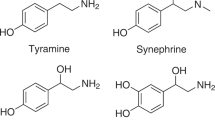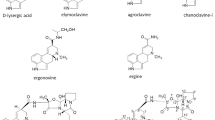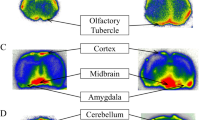Abstract
Cowie and Folley1 have suggested that oxytocin released in response to the stimulation of suckling in rats may cause the release of prolactin. If oxytocin causes a release of prolactin in birds, then administered oxytocin should perhaps cause an increase in the crop gland weight in the pigeon, which is shown to respond to prolactin2. This has been investigated by measuring the weight of the crop gland in pigeons (200–300 gm. in body-weight) after administration of 400 m.units of oxytocin (‘Syntocinon’, Sandoz Products Ltd.) systemically (200 m.units intravenously and 200 m.units intra-muscularly) and also intra-dermally (one unit) over the site of the gland for four days. The animals were killed on the fifth day when the crop glands were dissected out and weighed. The results are depicted in Fig. 1 as the mean of the percentage of the body-weights of the animals. Synthetic oxytocin in the doses used caused an increase in the crop gland weight of the pigeon, which differed significantly (P < 0.001) from the crop gland weights of the control pigeons. The pigeons injected with oxytocin after it had been incubated with sodium thioglycollate to inactivate its oxytocic activity3 did not show an increase of crop gland weight. The fact that oxytocin also has this crop-stimulating action on the pigeon makes results of blood and urine prolactin contents assayed by this method less acceptable as regards the specificity of the substance being measured. While the results are suggestive that oxytocin may, in birds, cause a release of prolactin, a direct action of oxytocin on the crop gland of the pigeon, not described before, has not been ruled out. Experiments are in progress investigating the mechanism of action of oxytocin on the pigeon crop gland and its significance.
This is a preview of subscription content, access via your institution
Access options
Subscribe to this journal
Receive 51 print issues and online access
$199.00 per year
only $3.90 per issue
Buy this article
- Purchase on Springer Link
- Instant access to full article PDF
Prices may be subject to local taxes which are calculated during checkout
Similar content being viewed by others
References
Cowie, A. T., and Folley, S. J., The Neurohypophysis, edit. by Heller, H., 192 (Butterworth's Scientific Publications, 1957).
Riddle, O., Bates, R. W., and Dykshorn, N. S. W., Amer. J. Physiol., 105, 191 (1933).
Van Dyke, H. B., Chow, B. F., Greep, R. O., and Rothen, A., J. Pharmacol., 74, 190 (1942).
Author information
Authors and Affiliations
Rights and permissions
About this article
Cite this article
CHAUDHURY, R., CHAUDHURY, M. Action of Synthetic Oxytocin on the Crop Gland of the Pigeon. Nature 193, 179–180 (1962). https://doi.org/10.1038/193179a0
Issue Date:
DOI: https://doi.org/10.1038/193179a0
This article is cited by
-
Failure of Oxytocin to stimulate the Pigeon Crop Gland
Nature (1963)
Comments
By submitting a comment you agree to abide by our Terms and Community Guidelines. If you find something abusive or that does not comply with our terms or guidelines please flag it as inappropriate.



